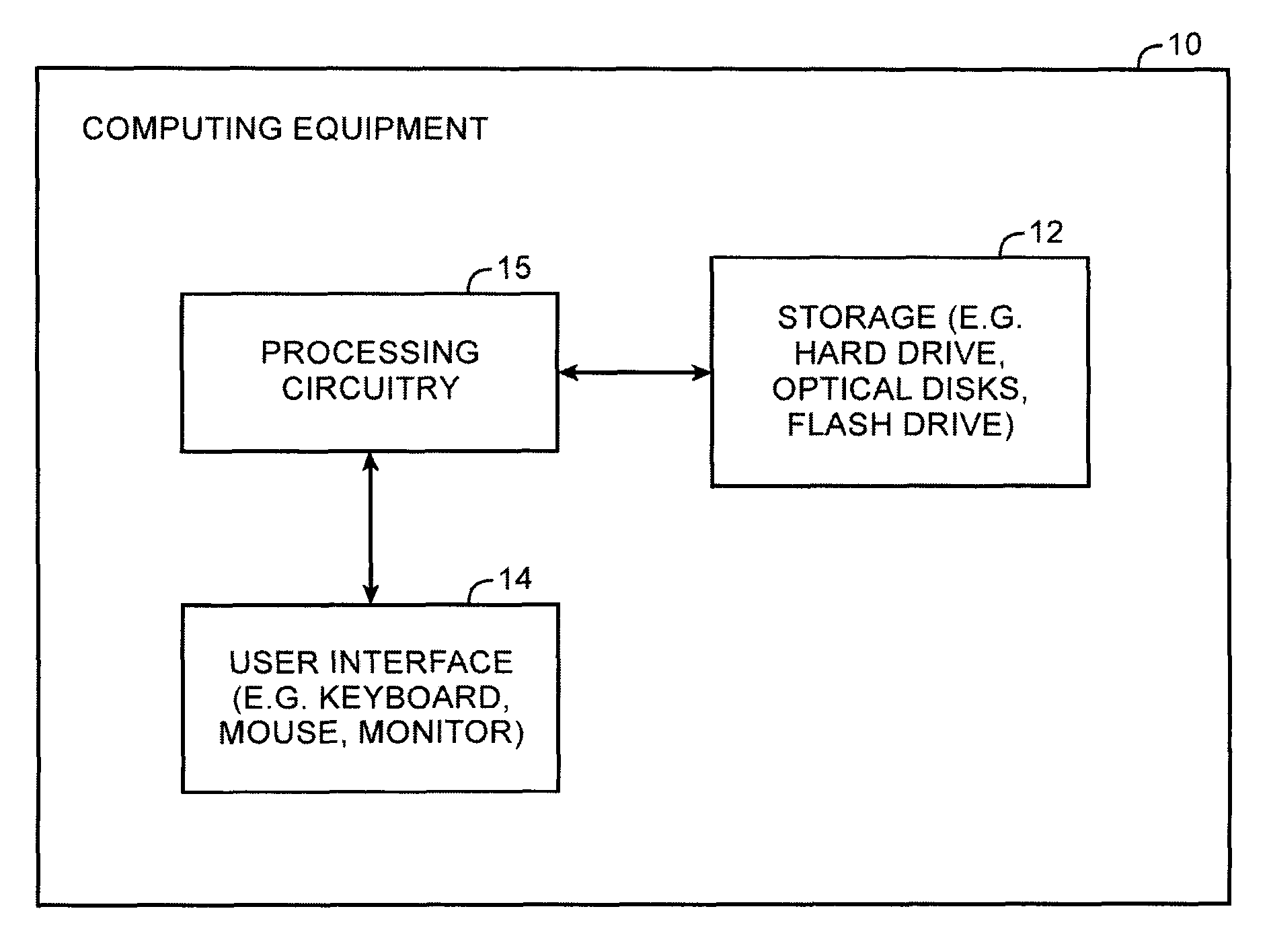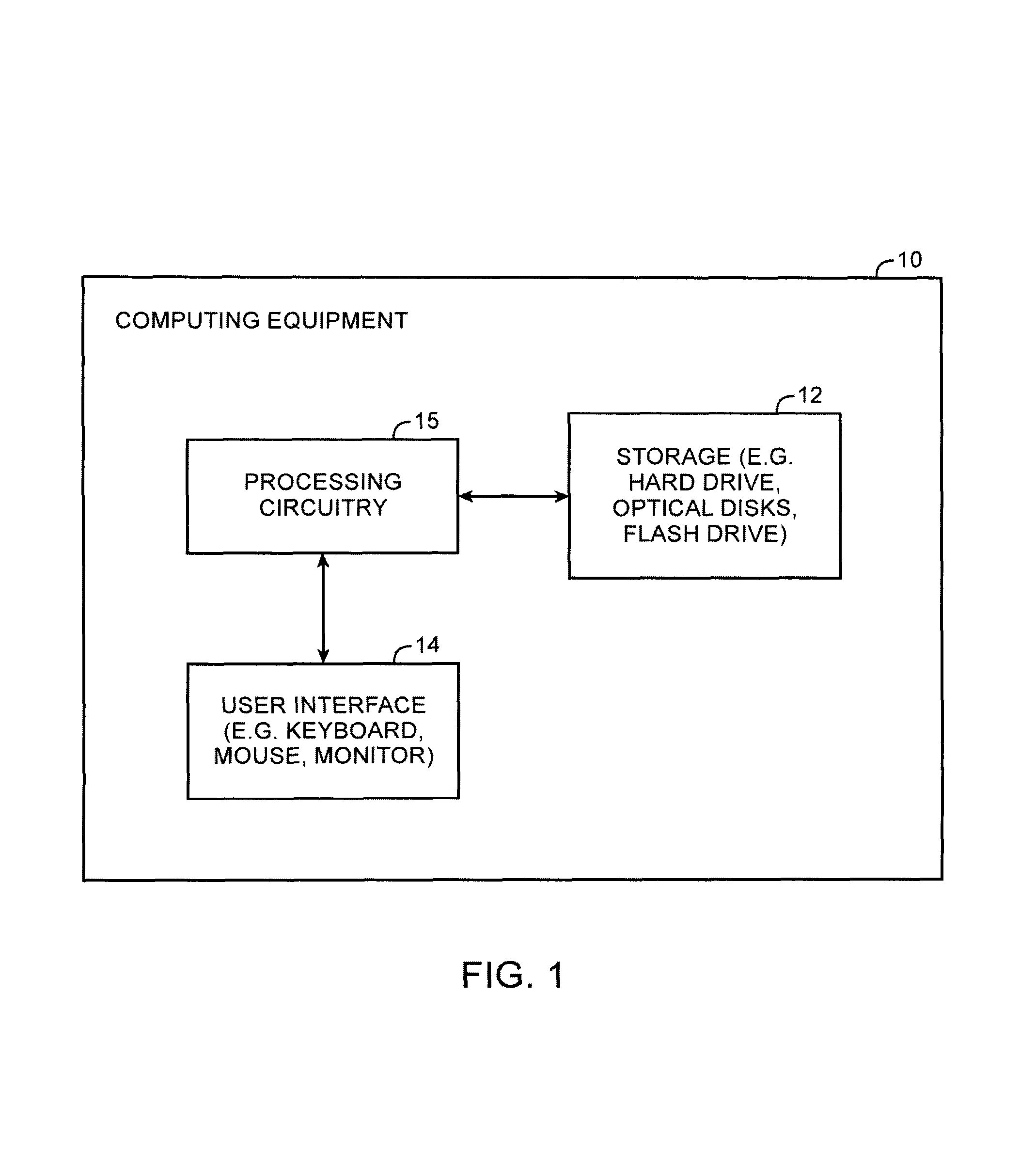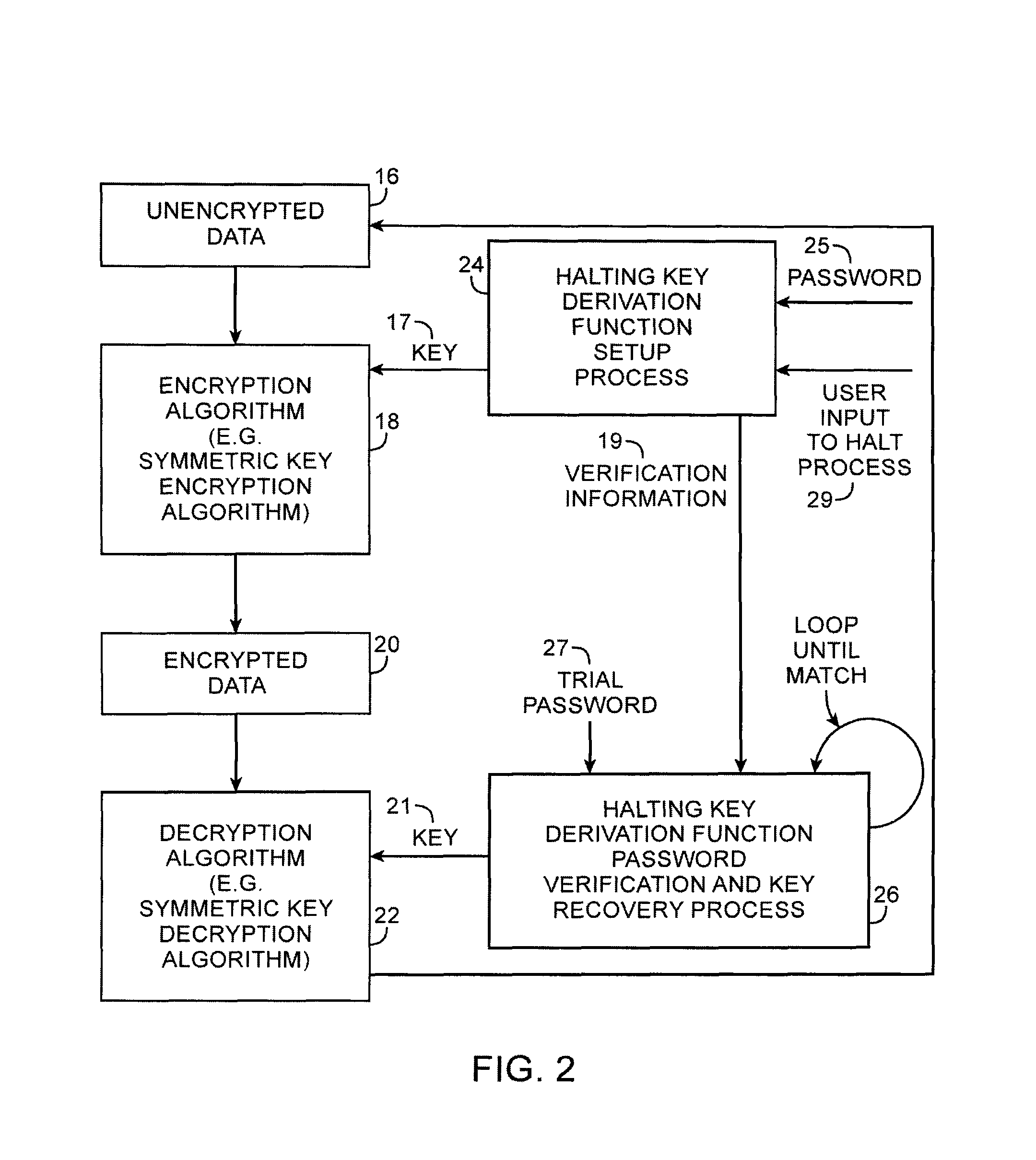Cryptographic system with halting key derivation function capabilities
a key derivation function and cryptographic system technology, applied in the field of cryptography, can solve the problems of burdening users, forcing potential attackers to spend more time calculating cryptographic keys, and longer it will generally take an attacker to correctly calcula
- Summary
- Abstract
- Description
- Claims
- Application Information
AI Technical Summary
Problems solved by technology
Method used
Image
Examples
Embodiment Construction
[0027]Cryptographic systems may be used to secure data from unauthorized users. In a typical arrangement, a cryptographic system may verify whether a user is authorized before granting access to sensitive data. Examples of methods a cryptographic system may use to verify a user's identity include password-based verification, biometric identification, and identification techniques based on physical tokens. In the following illustrative embodiments, text-based password verification is described as a suitable method of verification. However any other suitable verification method may be used in place of password-based verification. For example, a voice print or fingerprint password identification scheme may be used by representing biometric information as a text string.
[0028]Once a user has been authorized using a password, a cryptographic system may perform suitable functions in a secure manner. In the following illustrative embodiments, a key derivation function is used to generate a ...
PUM
 Login to View More
Login to View More Abstract
Description
Claims
Application Information
 Login to View More
Login to View More - R&D
- Intellectual Property
- Life Sciences
- Materials
- Tech Scout
- Unparalleled Data Quality
- Higher Quality Content
- 60% Fewer Hallucinations
Browse by: Latest US Patents, China's latest patents, Technical Efficacy Thesaurus, Application Domain, Technology Topic, Popular Technical Reports.
© 2025 PatSnap. All rights reserved.Legal|Privacy policy|Modern Slavery Act Transparency Statement|Sitemap|About US| Contact US: help@patsnap.com



